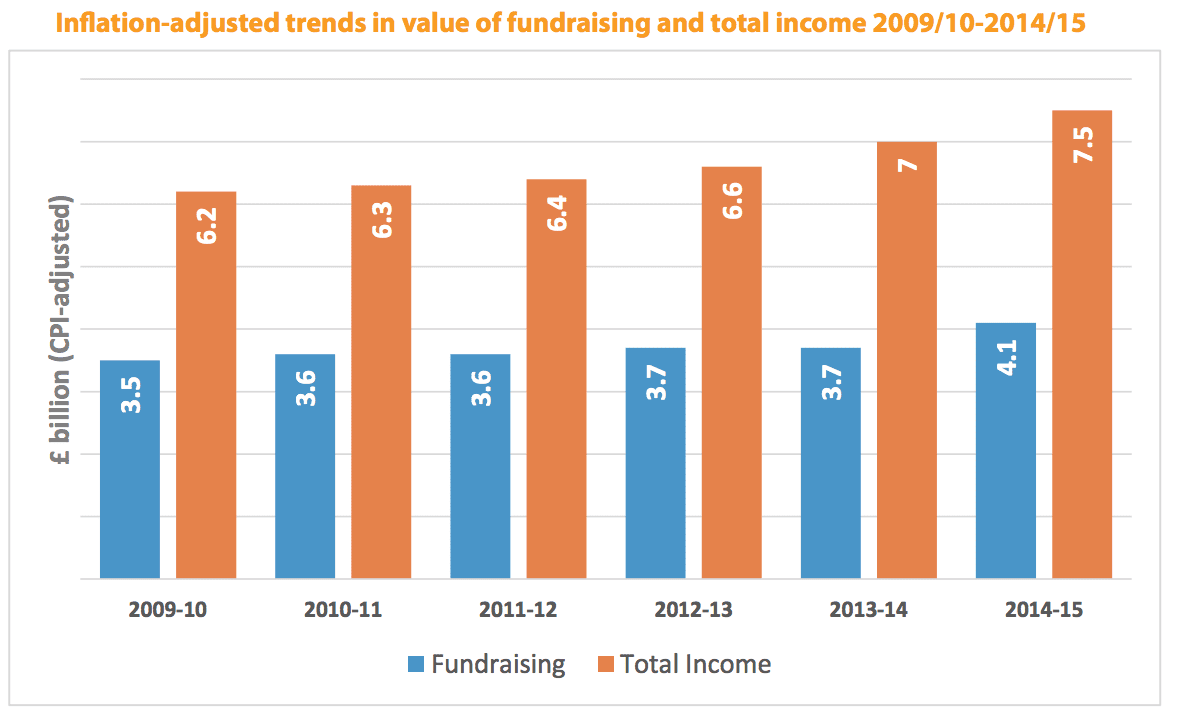Why do so many fundraisers like asking for such small gifts?
When Mark Astarita recently compared some charities to pound shops, he was right on the button.
Just like the pile 'em high, sell 'em cheap stores found on our high streets, charities have jumped on the discounting bandwagon.
You'd like to inoculate a child? Yes ma'am. That'll be £3 please. Kerching!
It's never been easier - or cheaper - to change the world. See an ad, call or send a text and within seconds you're being told that you've done something amazing. All you have to do is click on a link to the YouTube video to see the proof.
Why pay more?
And that's the point. Many people won't.
According to CAF's 2012 UK Giving report, there's a large number of people who appear to be acutely price sensitive when it comes to giving to charity. Just look at the 41% of donors who give under £10 each month. Millions of people, but they account for only 5% of the sector's voluntary income.
Whether they can't afford to give more or they don't really want to, the £3 offer seems to be aimed firmly at this price sensitive segment of the market.
Ask for £4 or £5 – as a one off or a monthly gift – and you'll see response rates fall dramatically.
And that's a problem. Just like the pound shop that depends on high volume sales to make a profit, the charity that follows a discounting model needs a large number of donors to make the strategy worthwhile.
And the easiest way to achieve this is to embark on a race to the bottom, where the charity with the lowest priced offer wins – at least in the short term.
After recruitment, the donors are called and converted to regular giving or upgraded. But because it was a low value appeal that drove the first gift, a request for more money tends not to generate a particularly positive response. The result is low conversion, low upgrade values and high attrition.
Take mobile giving for example. What do many £3 donors do when we give them a chance to skip or stop their regular gift? They skip and they stop. And they are doing it in ever increasing numbers.
And just as a pound shop budgets for a high percentage of its cheap and cheerful stock to malfunction and be returned, so the charity starts to look at attrition as a number that needs to be factored into a financial model rather than an indication that something is wrong.
High attrition is nature's way of telling you that your approach to fundraising is based on recruiting a large proportion of people that don't care about your cause. And if people don't care, it's very hard to engage them. People who don't care aren't going to read the communications that you send them, either online or offline.
The result is that a significant number of the donors that stick with you are not active supporters, passionately engaged with your work. Instead many of them are simply people who can't be bothered to cancel. After all, it's only a few quid a month.
But why has discounting exploded across the sector? Why do we ask for so little?
First off it's easy. All you need do is reduce the amount you ask for. Anyone can do it. It helps if your £3 will pay for something tangible like a mosquito net, a blanket, or inoculations, but that's not always essential.
Second, it's perhaps a reflection of the economic times. If people haven't got much cash, surely it's better to reduce the amount we ask for?
Perhaps. But when we see figures from that the Equality Trust showing us that income inequality is at a level last seen at the time of the first world war, it makes you wonder why so many charities are focussed on the most price sensitive sector of donors rather than looking at what the increasingly affluent top 10% of the population can afford to give.
 A review of charity fundraising advertisements from just after the first world war shows us that the typical value of a prompted gift amount then was 10 shillings (or 50 pence in today's currency). To place that into context, you could buy 20 pints of beer for 10 shillings in 1920.
A review of charity fundraising advertisements from just after the first world war shows us that the typical value of a prompted gift amount then was 10 shillings (or 50 pence in today's currency). To place that into context, you could buy 20 pints of beer for 10 shillings in 1920.
With the average pint in 2014 costing the best part of £4, that would be like us asking today for £70 to £80.
That's not something you see very often is it? And I don't really understand why.
For all the talk of an economic revival, the numbers show that it's only really the richest people who are benefitting. Currently the wealthiest 1% of the population hold more wealth than the poorest 50%.
Speak to this affluent group about their attitudes to giving and you'll find their hearts aren't made of stone. They have the same desire to help others as the rest of us. But one fact comes shining through. They don't think that the vast majority of fundraising materials produced by charities today are aimed at them.
So not surprisingly they rarely read them and they rarely respond.
One of the key reasons for this is that charities simply don't ask them for enough. £3 is seen to have such a small impact that it doesn't engage wealthy people either emotionally or rationally.
The other reason is far more worrying. And is down to the fact that price sensitive donors give so little and their attrition is so high, that success often depends on reducing costs.
As a result, thank you and upgrade processes are automated and regularly contracted out. That means that much of the human element is lost. Thousands of new donors are acquired who will never receive an individual and personal communication from the organisation they support.
This leaves the charity without any real idea of the full potential of the donors they are recruiting. But what's much worse is these donors have an experience of giving that is likely to leave them thinking that they aren't really valued – or needed. It's a vicious circle. Donors don't give enough to warrant special treatment, but without special treatment, the donors who can afford to give more, simply won't.
So rather than looking at how we recruit the largest number of donors as quickly and cheaply as possible, we should look at balancing our portfolio of supporters by focusing on what the donors who can give the most, actually want. Particularly when you remember that it's just 6% of donors who give 40% of all voluntary income to charity.
This will be a problem for many charities because it is expensive. It will require them to provide detailed information on the nature of their work, it means they will need to be able justify asking for a large sum and, above all, it will mean changing the way they treat donors. The general thank you letter, email or text with a link to a YouTube video isn't enough. Instead charities must re-learn how to communicate like human beings and show the donors that they are actually valued.
Just as there's no skill required to open up a pound shop, there's no skill required in asking people for very small gifts. Anyone can do it because it's doesn't take a great deal of imagination.
What's harder is creating an offer that supporters will pay a premium for. It might not bring in as many donors as discounting, but the long-term value and loyalty of the donors it does attract will far outweigh the quick wins of being just another charity that drops the donor focus in order to join the £3 a month club.
This is a slightly adapted version of an article I wrote for the September 2014 edition of Third Sector magazine.
£1 Shop photograph adapted from an original by Emily Webber from London Shop Fronts.
Tags In
Related Posts
1 Comment
Comments are closed.
The Essentials

Crack the Code to Regular Giving: Insights, Strategies, and a Special Giveaway!

‘Tis Halloween. Keep to the light and beware the Four Fundraisers of the Apocalypse!

Why do people give? The Donor Participation Project with Louis Diez.

A guide to fundraising on the back of a postcard

What does the latest research tell us about the state of fundraising?








Thanks Mark, an excellent post that describes a situation that seems to be getting increasingly worse. I think one issue is that it takes a very brave charity to break with the convention of asking for very low initial prices. When all the large charities are asking for the same amount as each other and that the amount hasn’t really changed over the last decade ago what signal does that send to consumers? I’d suggest it says your gift doesn’t matter that much. Compare that to say MSF who keep their ask levels high – why, because their supporters tell them they understand that £10 really isn’t going to have much effect.
Combine the low ask with packs that include all sorts of ‘involvement’ devices and it’s no wonder the proportion who give again is so low.